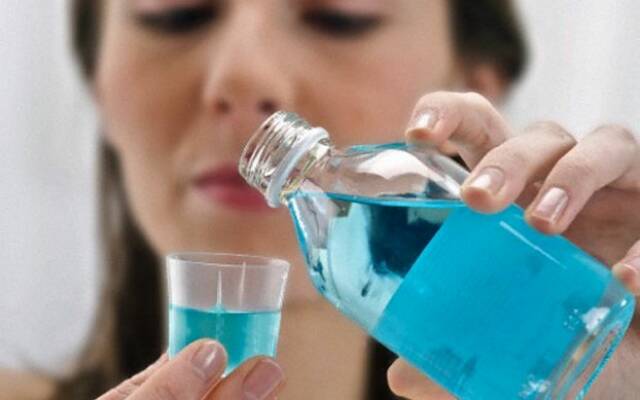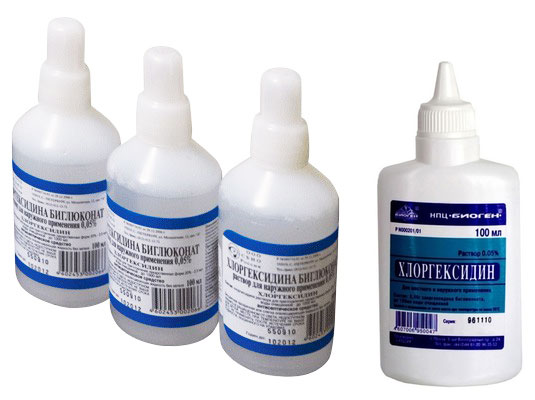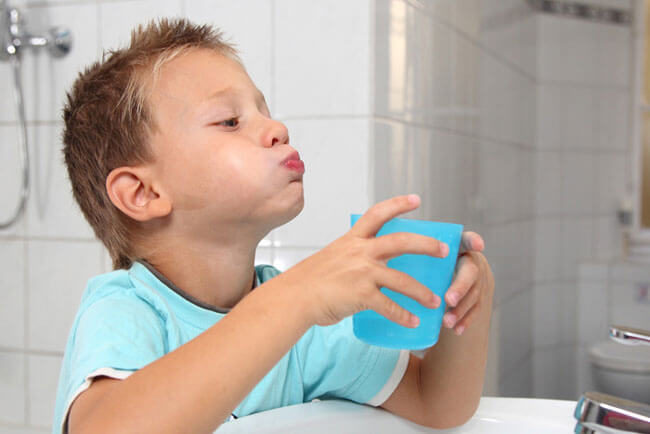Diseases of the oral cavity often cause many problems - cause a lot of unpleasant pain, seriously bother our health. Therefore, if it was not possible to prevent the occurrence of the disease, then you should immediately start a struggle with it, while the disease is still at an early stage.
Content
- Chlorhexidine for the oral cavity: characteristics and application
- The form of the release of chlorhexidine
- The advantages and disadvantages of the use of chlorhexidine Bigluconate for rinsing the mouth
- How to rinse your mouth chlorhexidine
- Basic rules for rinsing the mouth of chlorhexidine
- How to breed chlorhexidine for rinsing the mouth
- Chlorhexidine - rinse of the mouth after tooth extraction
- How to rinse your mouth with chlorhexidine with inflammation of the hood above the wisdom tooth
- Is it possible to rinse your mouth with chlorhexidine with stomatitis
- How to rinse the mouth of chlorhexidine with gum inflammation
- Chlorhexidine - rinse of the mouth with tonsillitis
- Chlorhexidine for rinsing mouth for children and pregnant women
- Chlorhexidine for rinsing the mouth: video
It is worth saying that a large number of ENT pathologies arise due to the penetration of various kinds of infections into the body. Most often, pathogens of microorganisms come to us through the oral cavity. You can get rid of them not only with the help of regular teeth, but also due to timely rinse of the mouth. In addition, modern toothpastes can not always cope with harmful bacteria that are in the oral cavity. To do this, brushing the teeth with rinsing. There are many solutions intended for these purposes, among them, chlorhexidine is most often used to rinse the mouth. Next, we consider the mechanism of action of this dental drug, as well as how to properly use chlorhexidine for rinsing the mouth.
Chlorhexidine for the oral cavity: characteristics and application

Chlorhexidine is an elixir-antiseptic, designed to combat pathogenic bacteria concentrated in the oral cavity. This tool can be used to treat many dental problems and ENT pathologies. You can purchase this drug in a pharmacy without a doctor’s prescription, but in any case, you can’t engage in self -medication.
According to the instructions of the chlorhexidine for rinsing the mouth, the solution is already sold in the finished form at a concentration of 0.05%, so before use the product does not need to be diluted with water. It is not recommended for children under 3 years old to use this tool. Sometimes pediatricians prescribe the use of chlorhexidine in the form of a spray.
The characteristics of chlorhexidine are as follows:
- This tool, as mentioned above, is used to treat diseases of the oral cavity. It is prescribed by dentists or ENT doctor. Available in the form of a solution intended for rinsing. The dosage and duration of rinsing should be prescribed by a doctor, because if you abuse this tool, you can get a burn of the oral mucosa.
- It is worth saying that chlorhexidine is a strong drug, therefore it is not used for preventive purposes, but only exclusively for the treatment of dental diseases. In addition, it is not recommended to rinse the oral cavity with this tool too often.
- Sometimes chlorhexidine is used not only for dental purposes, but also used to treat gynecological diseases, because this drug has excellent antiseptic properties.
- This drug has a relatively low price, so treatment with chlorhexidine can be called economical.
- The tool has a local antiseptic effect, while not affecting the rest of the body.
- This drug is used in dental practice for a long time, for more than 50 years.
- The active substance of the drug is a chlorhexidine Bigluconate. It can eliminate various pathogenic mushrooms, bacteria, viruses from the oral cavity.

Diseases in which the use of the drug is shown, as follows:
- Stomatitis.
- Gingivitis.
- Inflammation of the gums (after teeth removal).
- Periodontitis.
- Treatment of the hole (after removing the wisdom tooth).
- Dentures disinfection.
- Inflammation of the wisdom tooth.
- Diseases of the throat, tonsillitis (not having an infectious nature of occurrence).
The form of the release of chlorhexidine

Chlorhexidine is available in two forms:
- Liquid in vials with a concentration of 0.05%.
- Spray with a dispenser.
The last package is very convenient for processing wounds, as well as irrigation of the oral cavity in children. This antiseptic has no analogues. Other drugs similar in action simply have a different chemical basis, so it is impossible to consider them a complete analogue of chlorhexidine. One of these antiseptics is Miramistin.
Chlorhexidine refers to antimicrobials:
- The drug successfully fights with most pathogenic bacteria in the human mouth.
- Successfully treats diseases caused by both aerobic and anaerobic bacteria. Heals diseases caused by the action of viruses.
For the treatment and prevention of oral diseases, only aqueous solution of chlorhexidine is used. There is also an alcohol solution, but it is used only for antiseptic treatment of premises in medical institutions.
The advantages and disadvantages of the use of chlorhexidine Bigluconate for rinsing the mouth

As a rule, poor results from the treatment of diseases with chlorhexidine are the result of errors in its use.
So, in the treatment of gum inflammation, many patients complain of the short -term effect. However, in this case, in addition to the treatment of inflammation itself, which is already a consequence, it is necessary to engage in prevention and elimination of the main cause of the disease. And most often the cause of gum inflammation is tartar. If you do not get rid of it, the meaning of the treatment of inflammation disappears.
Also, many use chlorhexidine to treat stomatitis, although it is not intended for this. It can only help for the prevention of stomatitis complications, but it does not heal the disease itself. That is why the effect of the treatment of this pathology by chlorhexidine can simply not wait.
A solution of chlorhexidine for rinsing the mouth has its obvious advantages and disadvantages. The first can be attributed:
- Long -term action. One -minute rinse allows you to form a thin film on the mucous membrane of the oral cavity and teeth.
- High antibacterial activity.
- Low price.
The disadvantages of chlorhexidine are:
- An unpleasant bitter taste.
- Zero antiviral activity. This, however, can be considered a disadvantage in the disease of a herpetic form of stomatitis, which is caused by herpes virus.
- Coloring tooths in a dark color. With prolonged use of chlorhexidine, a plaque on the teeth that stains them is formed.
How to rinse your mouth chlorhexidine
Basic rules for rinsing the mouth of chlorhexidine

- Before starting the mouth of the mouth, chlorhexidine does not need to be diluted with water. It is already completely ready for use.
- It is necessary to process the throat or oral cavity at least twice a day. Do this after eating and brushing your teeth.
- Rinse the oral cavity at least 1-2 minutes. It is after this time that the necessary microscopic film is formed on the surface of the oral cavity, which will remain for several hours.
- In the treatment of most diseases of the oral cavity, the rinse course of chlorhexidine lasts at least 10 days, when rinsing the throat - from 7 to 10 days.
How to breed chlorhexidine for rinsing the mouth
It is not necessary to dilute the solution of chlorhexidine 0.05% for sanitation of the oral cavity. He is already ready for use.
The drug is stored for 2 years, after which it loses its properties. Storage conditions: temperature no more than +25 ° C, a place protected from direct sunlight, away from children.
Use the drug after the expiration of the expiration date is prohibited.
Chlorhexidine - rinse of the mouth after tooth extraction

When a tooth is removed, rinsing chlorhexidine in the following cases is often used:
- If the removal process has passed with complications.
- If the tooth was removed against the background of the inflammatory process.
- If the oral cavity has teeth with caries or other problems that can cause suppuration of the blood clot at the removal site.
After tooth extraction, rinsing is carried out 2-3 times a day, one minute. You need to do this calmly. Active rinse can lead to a removal of a blood clot, which is guaranteed to lead to an inflammatory process.
If the alveolitis of the tooth holes for some reason still formed, chlorhexidine can act as additional therapy. The main treatment of this inflammation is to clean the tooth holes and laying drugs in it. Rinse by chlorhexidine will help accelerate the healing process.
How to rinse your mouth with chlorhexidine with inflammation of the hood above the wisdom tooth

When the wisdom is erupted, the so -called hood forms on it. Between the last and surface of the tooth, a cavity forms in which bacteria develop very well. Their activity leads to the beginning of the inflammatory process, which is expressed in the edema of the mucous membrane, the accumulation of pus. The treatment of inflammation of the hood should be carried out in dentistry, and rinsing with chlorhexidine is additional therapy.
Rinse is carried out 2 times a day - in the morning and evening for 1 minute.
Is it possible to rinse your mouth with chlorhexidine with stomatitis
Chlorhexidine is not used for the treatment of stomatitis, but for the prevention of bacterial complications of a viral disease. To fight viruses, this drug is useless. In the herpetic form of stomatitis, it is better to use Miramistin.
How to rinse the mouth of chlorhexidine with gum inflammation

Chlorhexidine is very well used to relieve gum inflammation. However, it should be understood that problems with the gums arise due to the following dental ailments-tartar, tooth. Rinse with an antibacterial agent can reduce symptoms, but the effect will be short -term. Without removing plaque on the teeth, the treatment of gum inflammation by any means, including chlorhexidine, will not be effective. After removing the plaque or stones, rinsing chlorhexidine is carried out for 1 week twice a day. For the prevention of inflammation, you can use toothpastes, which include this drug.
Chlorhexidine - rinse of the mouth with tonsillitis
Chlorhexidine is not used for the treatment of tonsillitis directly, but for the prevention of inflammation of the oral cavity, which can begin against the background of the underlying disease. Rinse is carried out up to 3 times a day. For young children, spraying spray is used. However, it is worth remembering that it is impossible to spray the tonsils for children under 3 years of age of chlorhexidine.
Chlorhexidine for rinsing mouth for children and pregnant women

There are no contraindications to the use of chlorhexidine during pregnancy and children. The only conditions for therapy is the restriction of time up to 10 days. The use of chlorhexidine can lead to dysbiosis of the oral cavity and the appearance of candida mushrooms in it. In the absence of treatment results, you can try other drugs.
For children, you can use the chlorhexidine spray. The dosage is prescribed by the doctor.









Comments
a couple of years ago, there was no side of metrogils from the same problem, there were no side effects ...
I’m not a fan of peeling at all, it saves from acne of metrogil, it also smoothes it ...
Great article! ...
I take the second course of the Capsules Climafite 911. The tides went very quickly. It became calmer, irritability went away and I sleep well ...
i also noticed - it is worth nervous, everything immediately affects the face. Therefore, I try to avoid conflicts and unpleasant people. Of the creams, I like Miaflow from wrinkles - smoothes not only small wrinkles ...